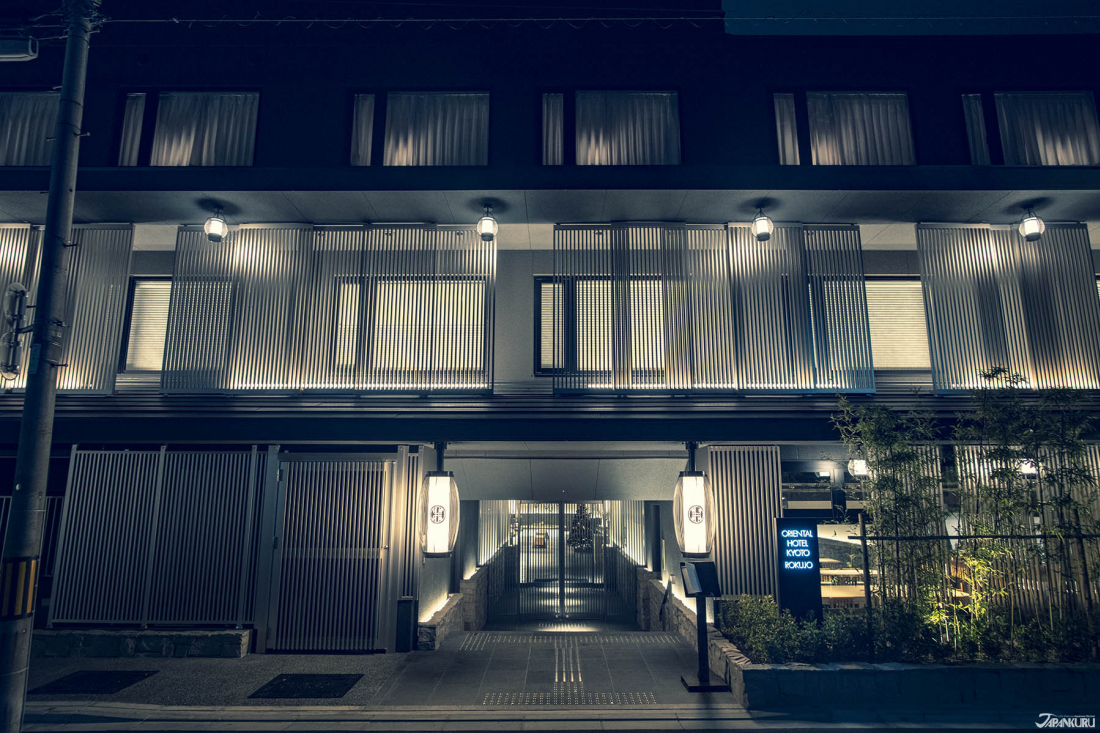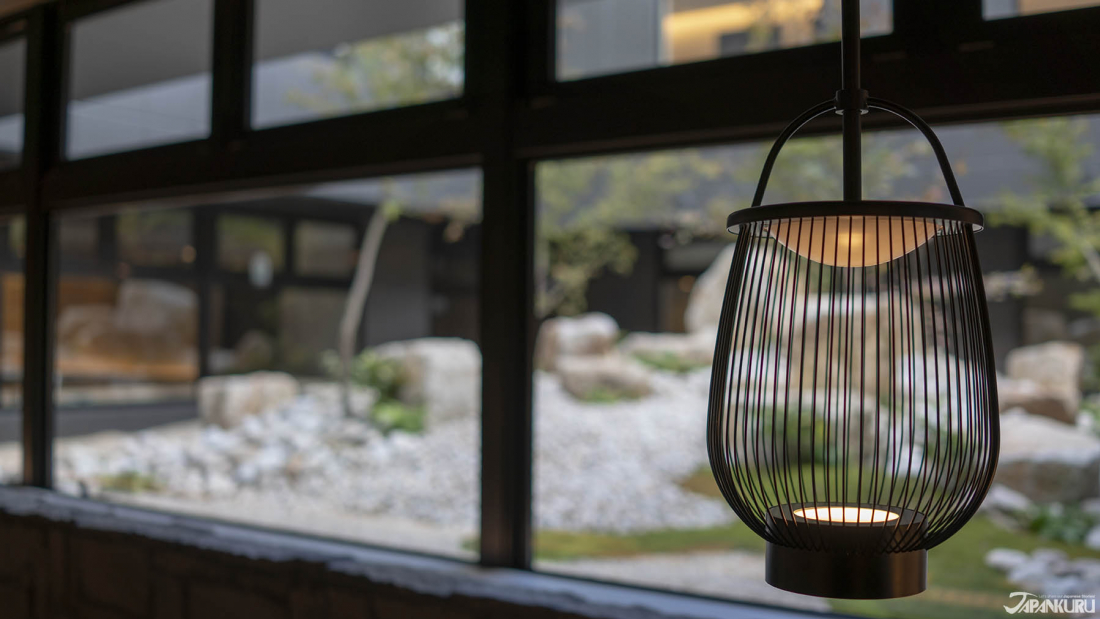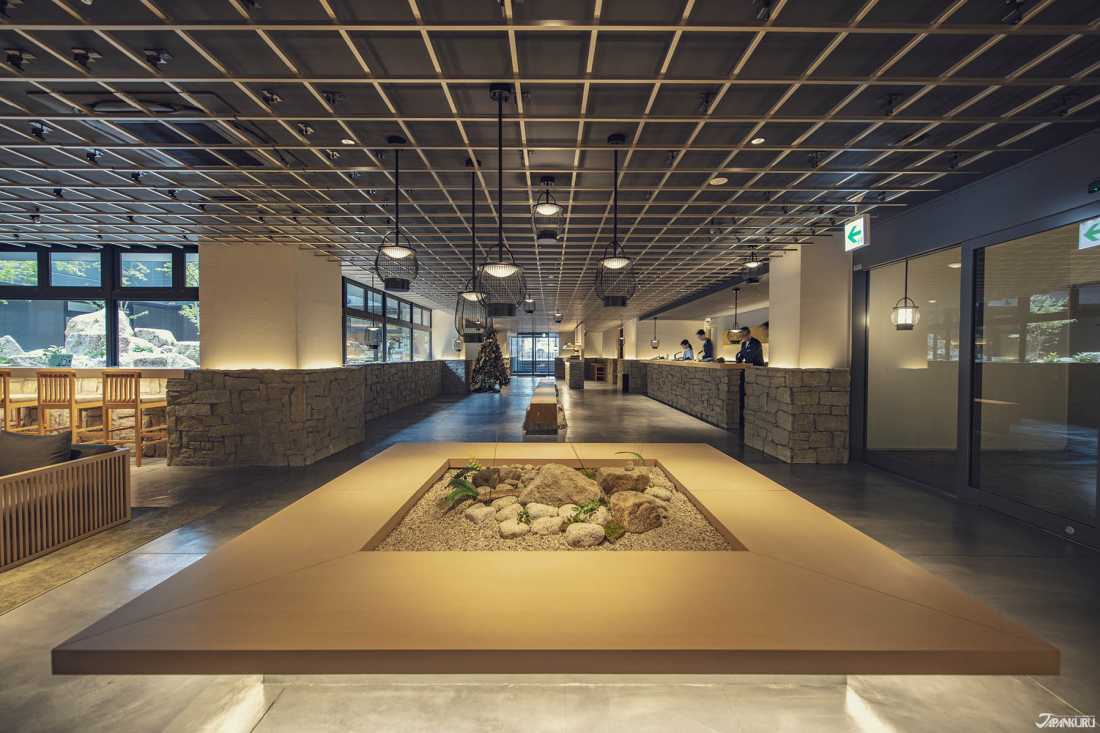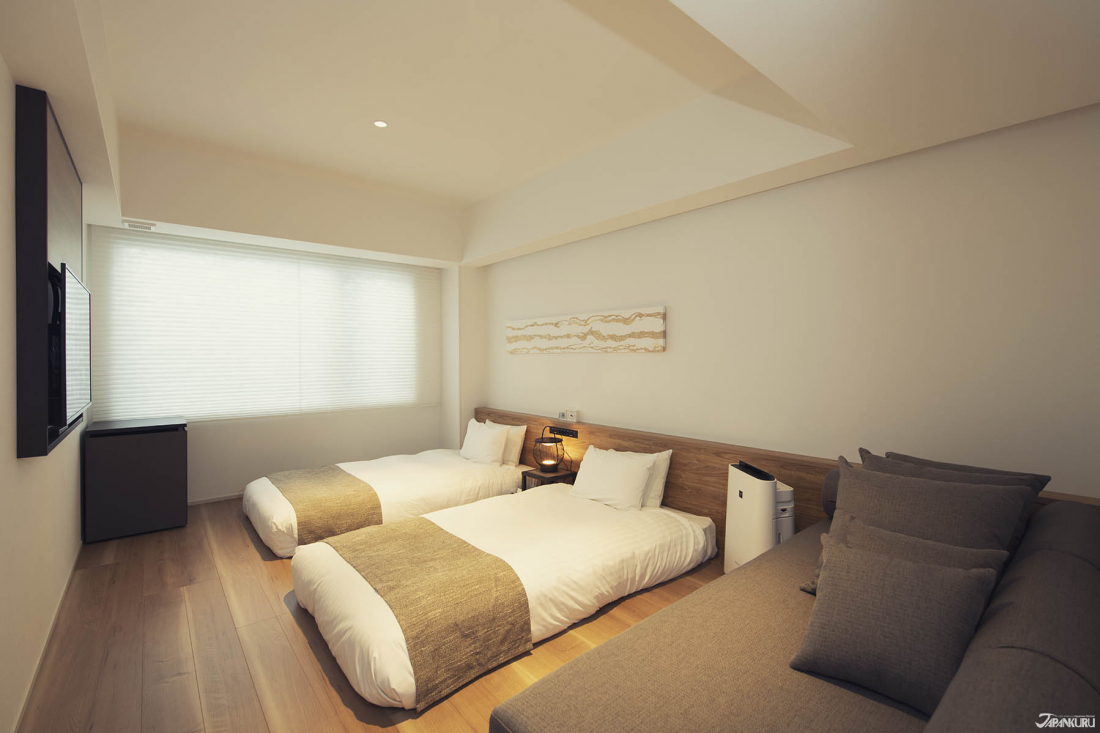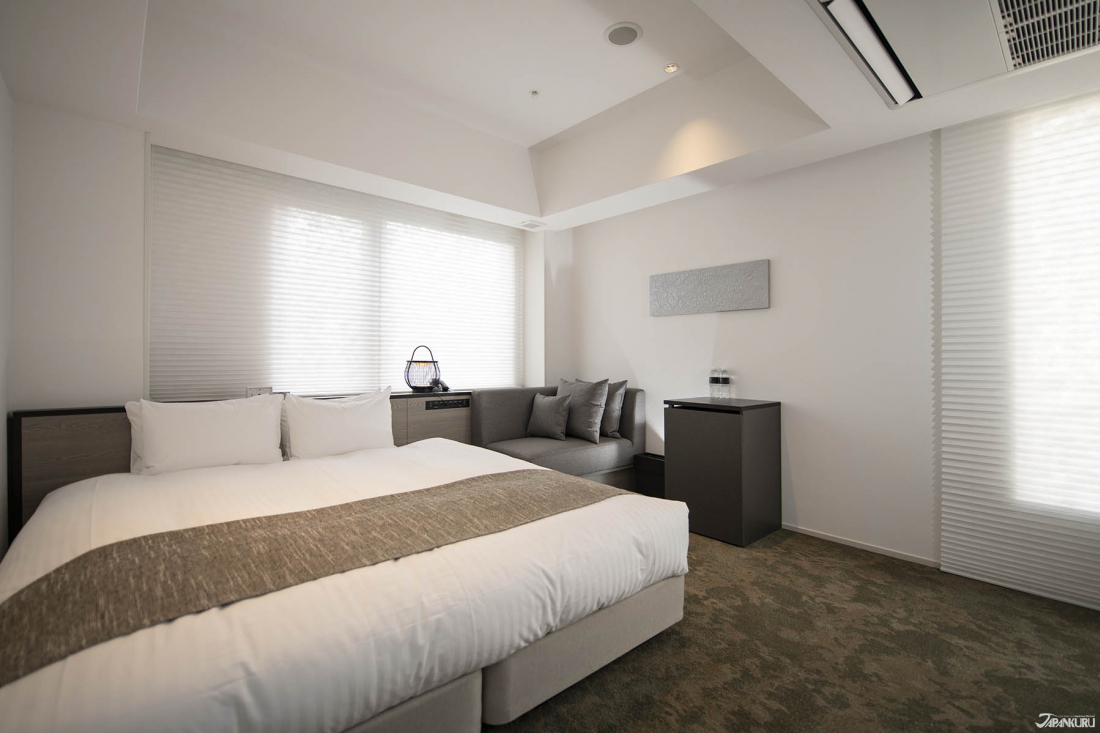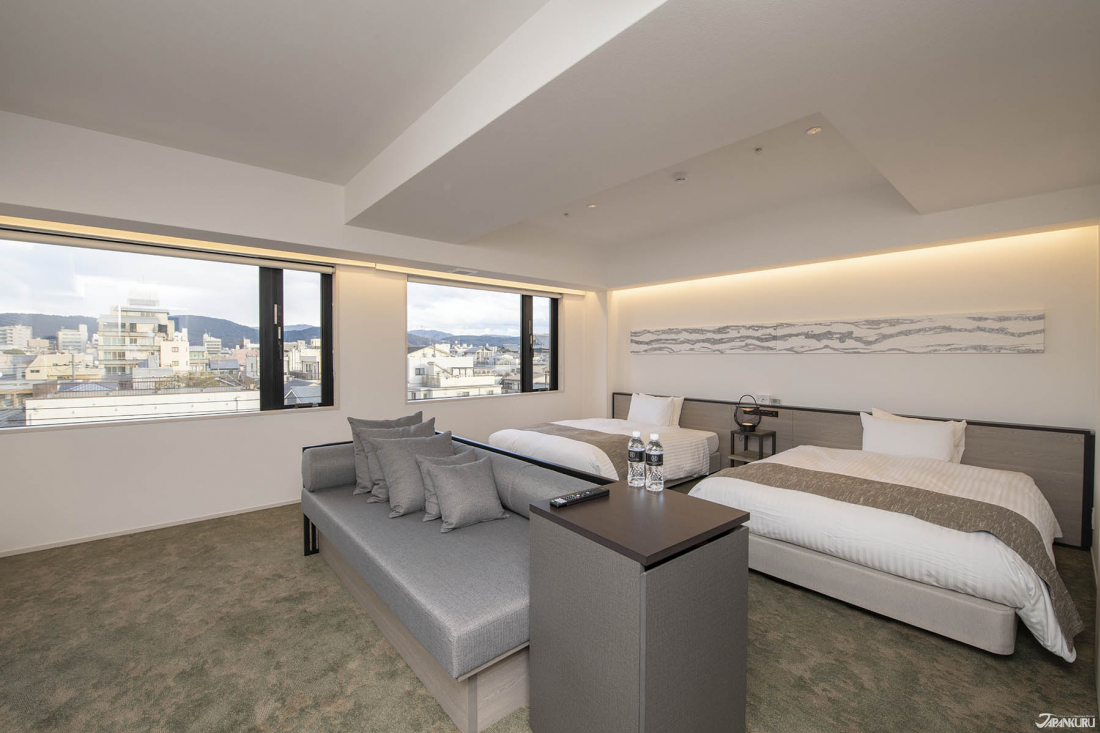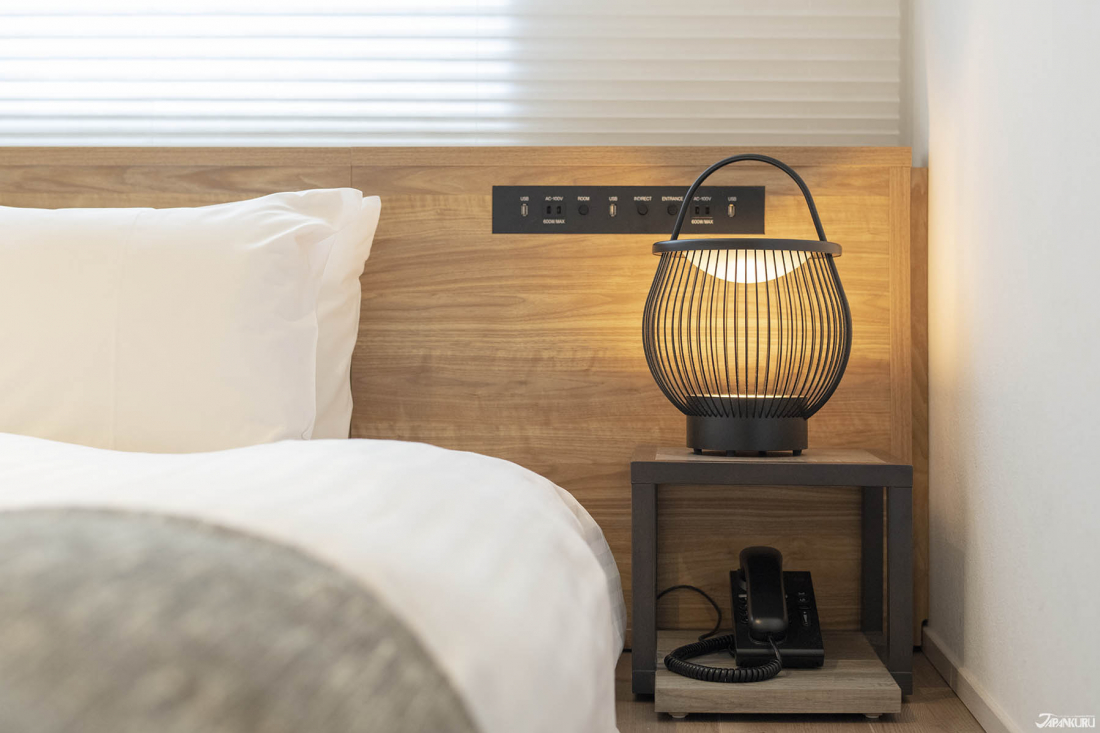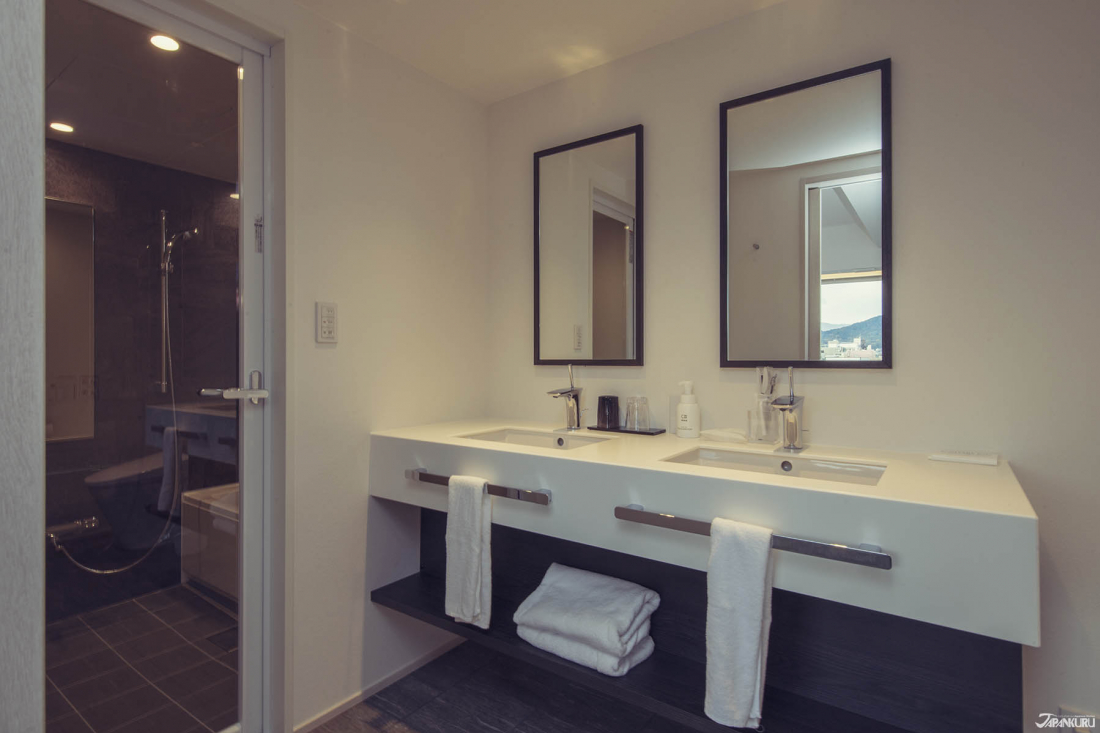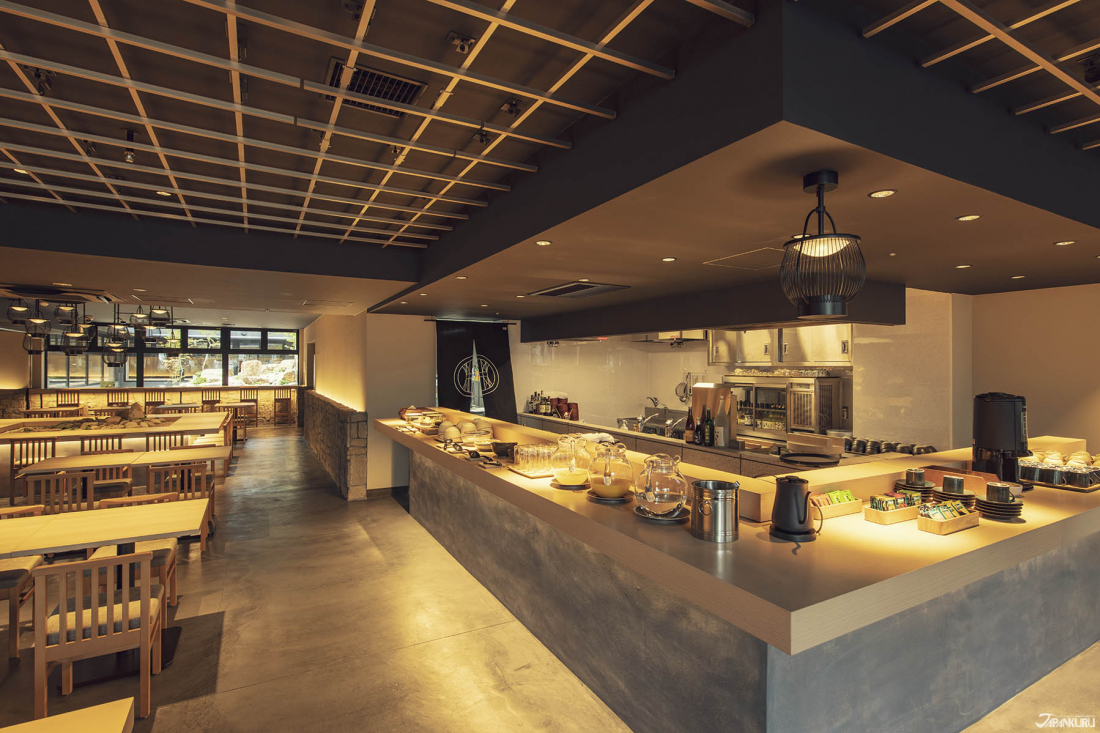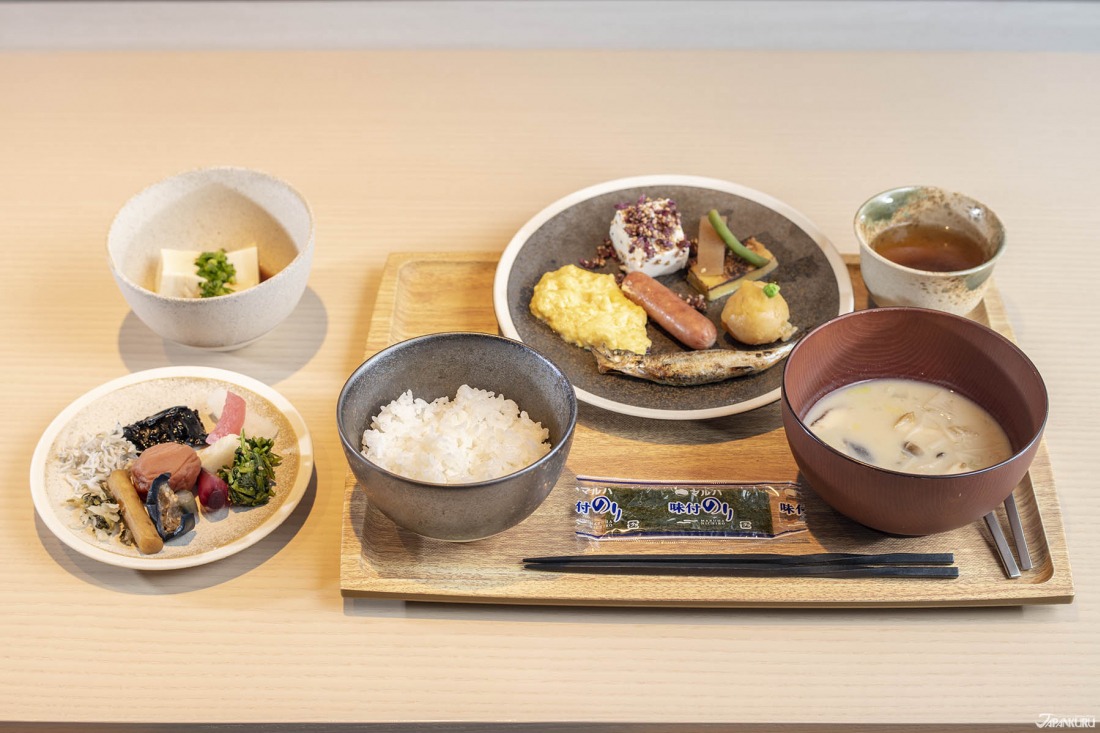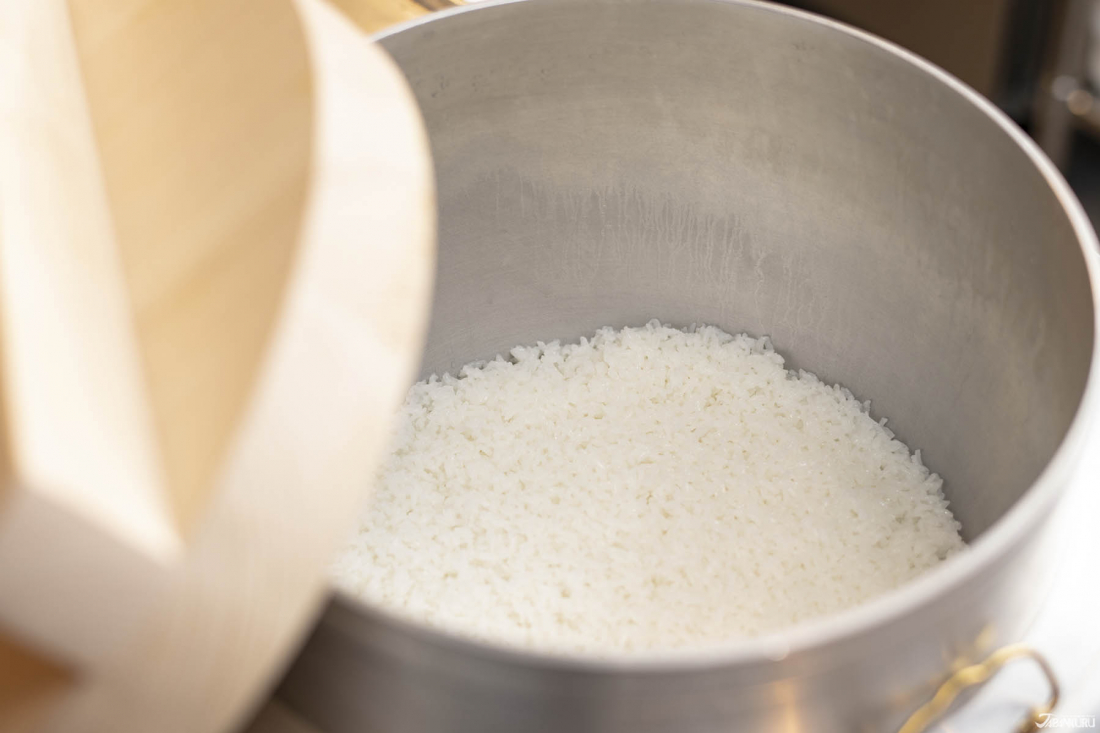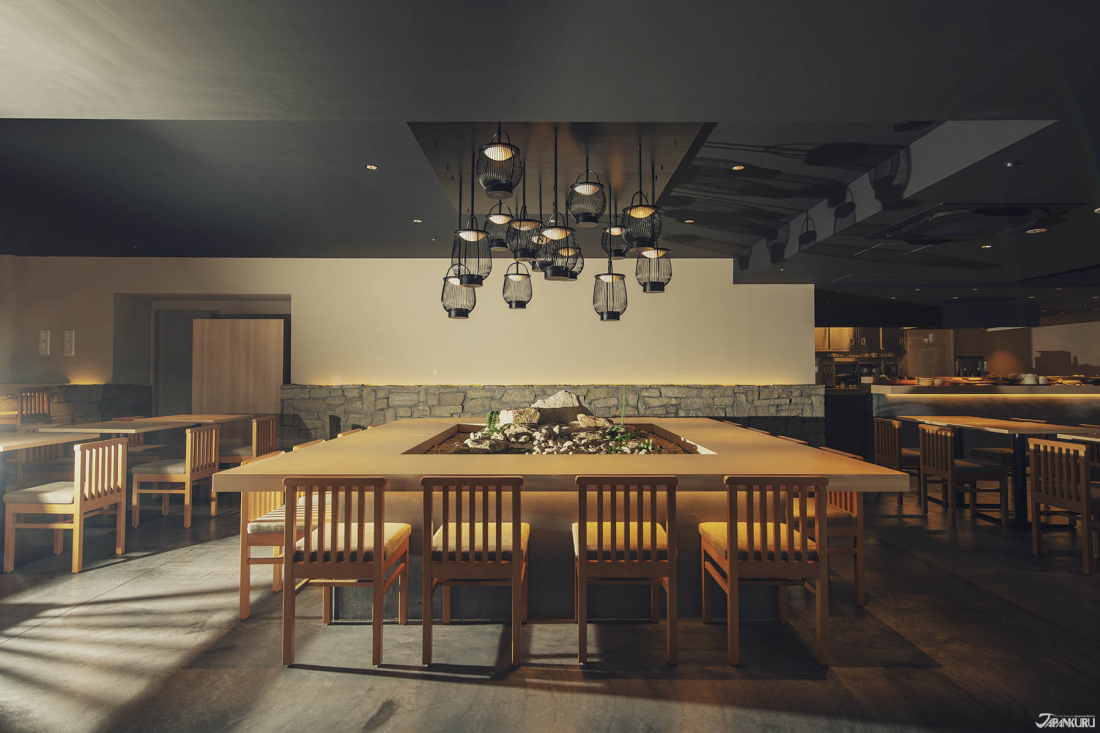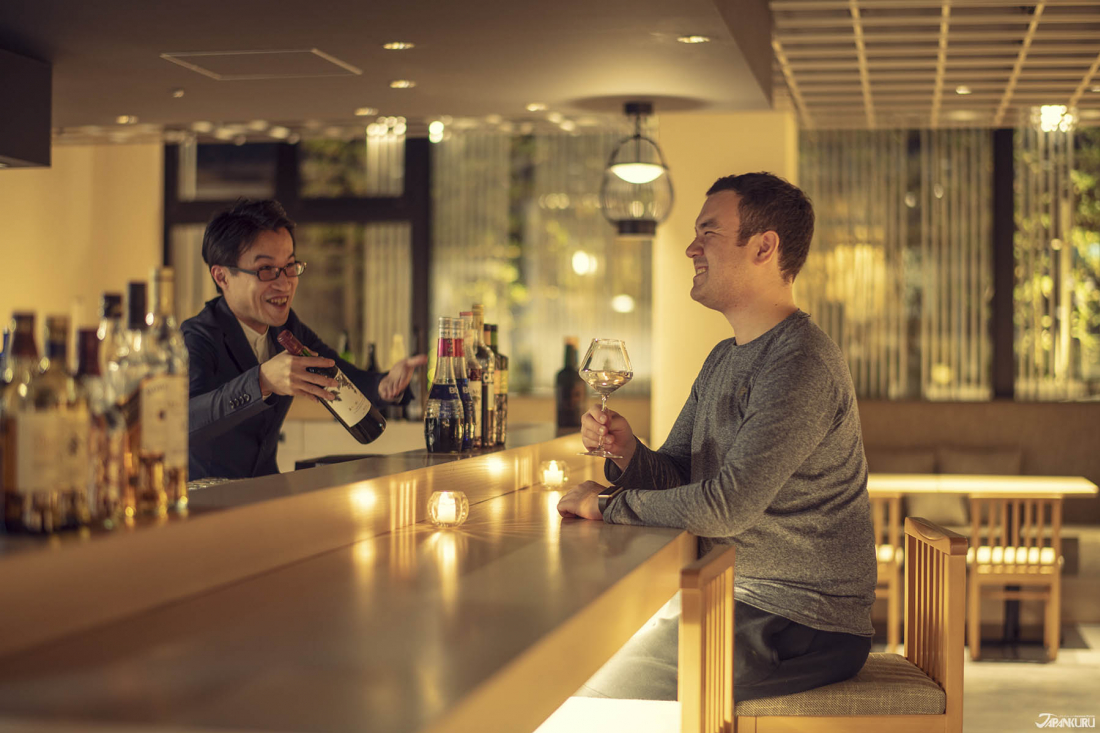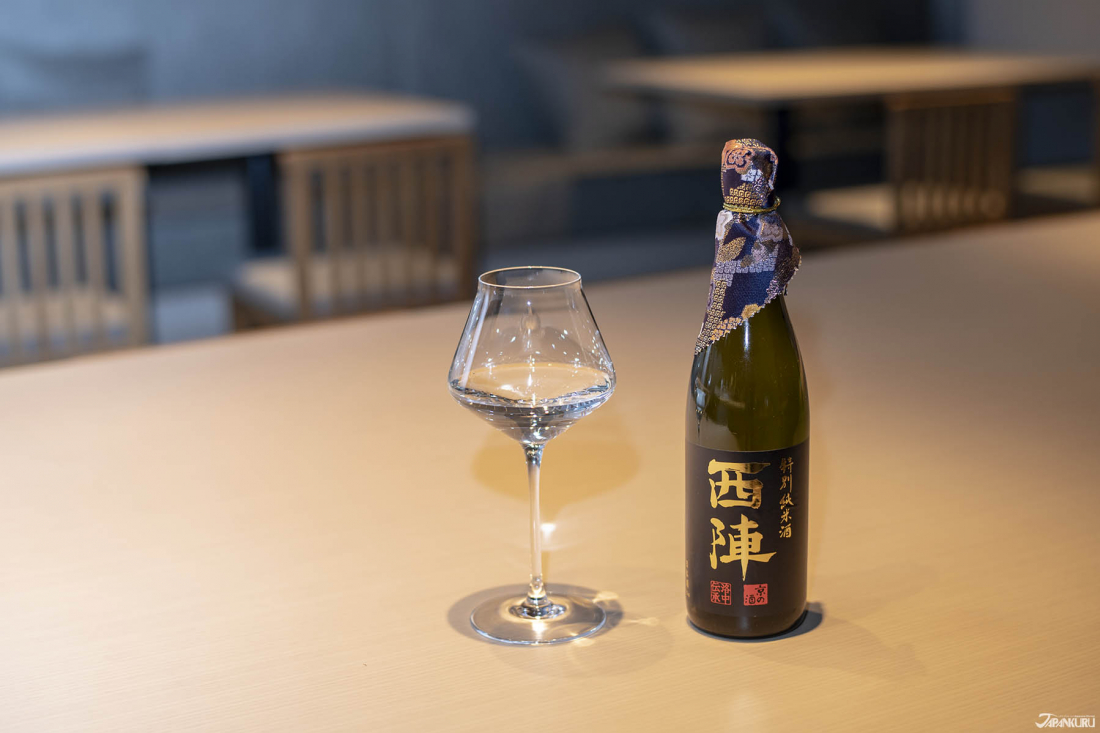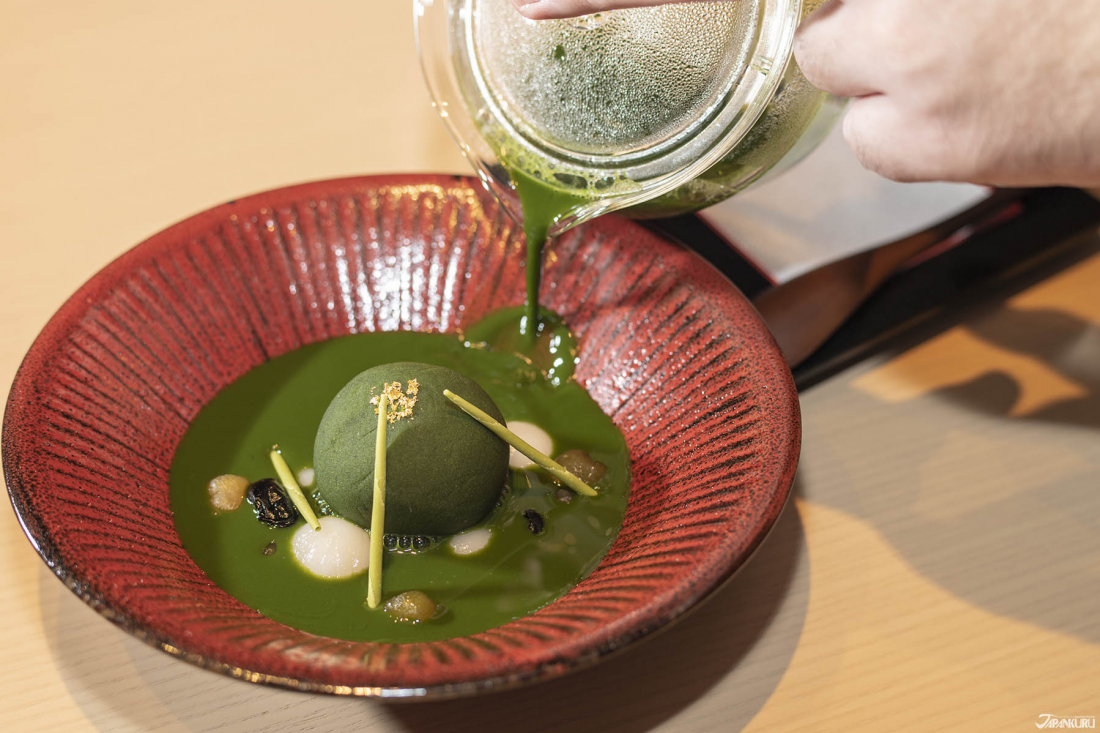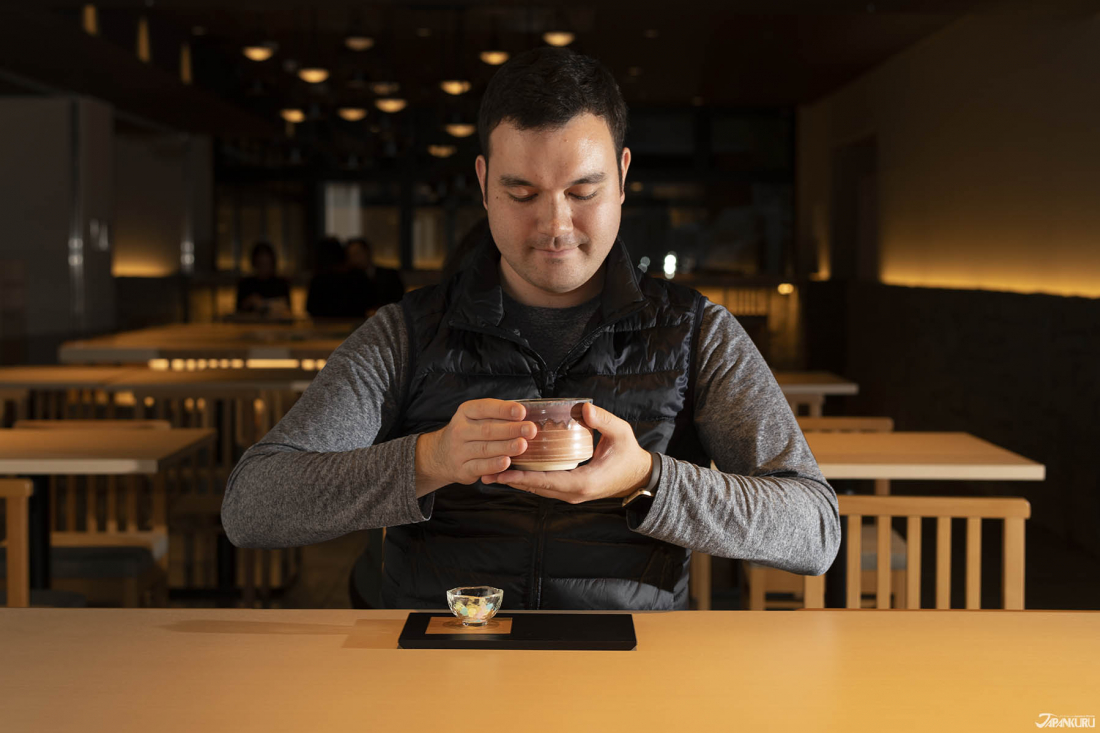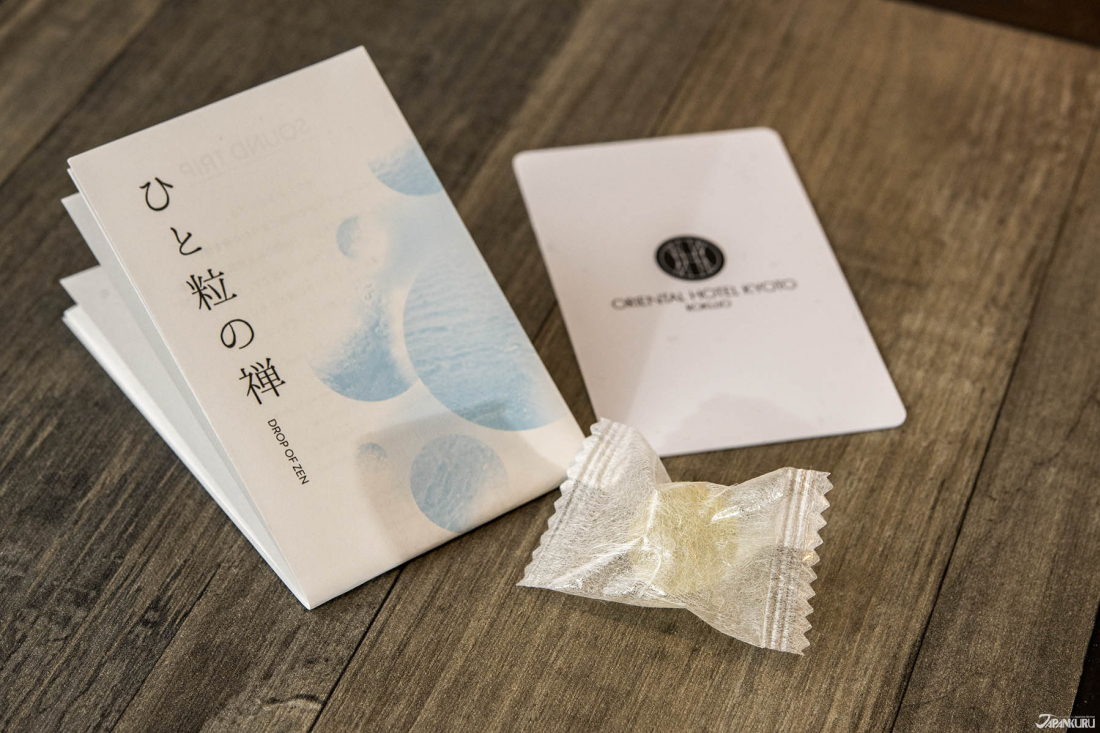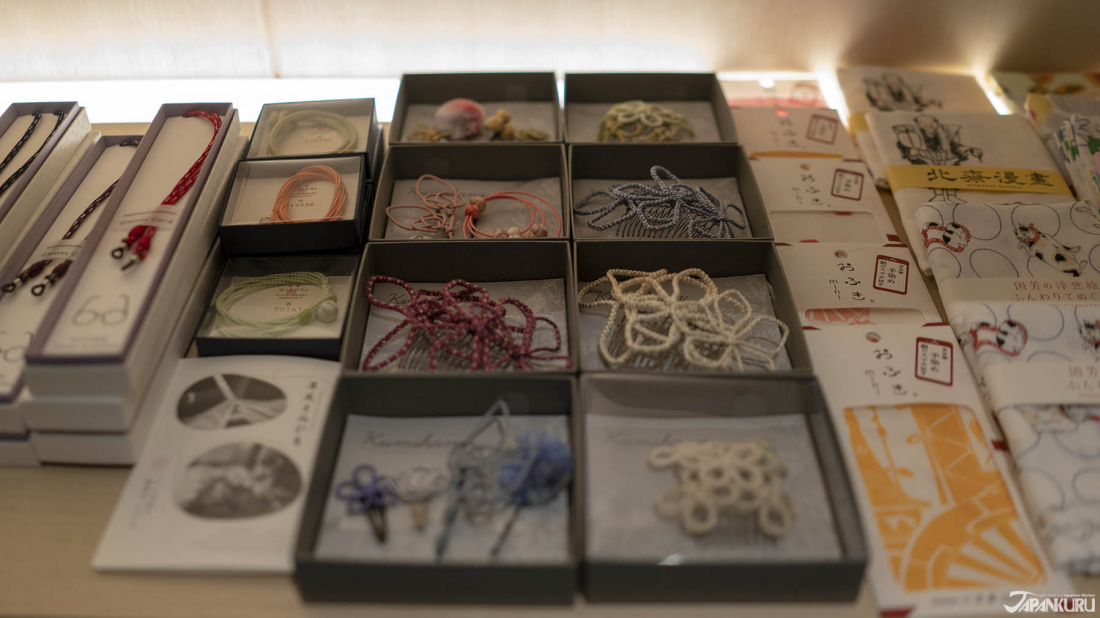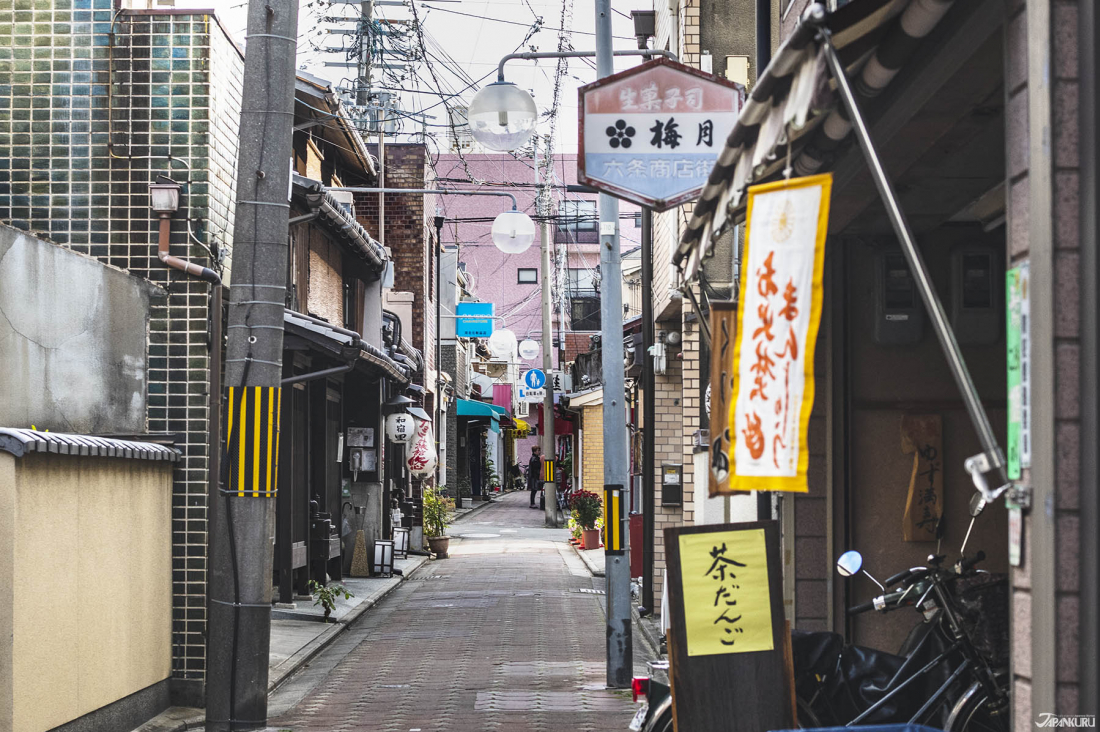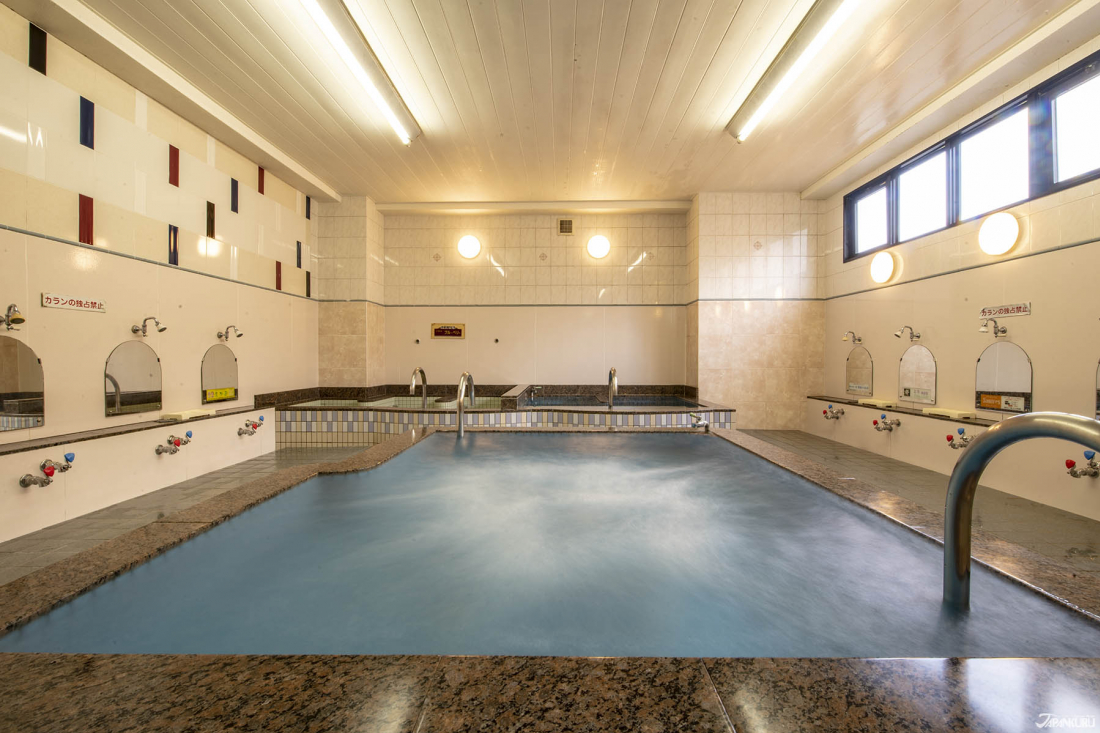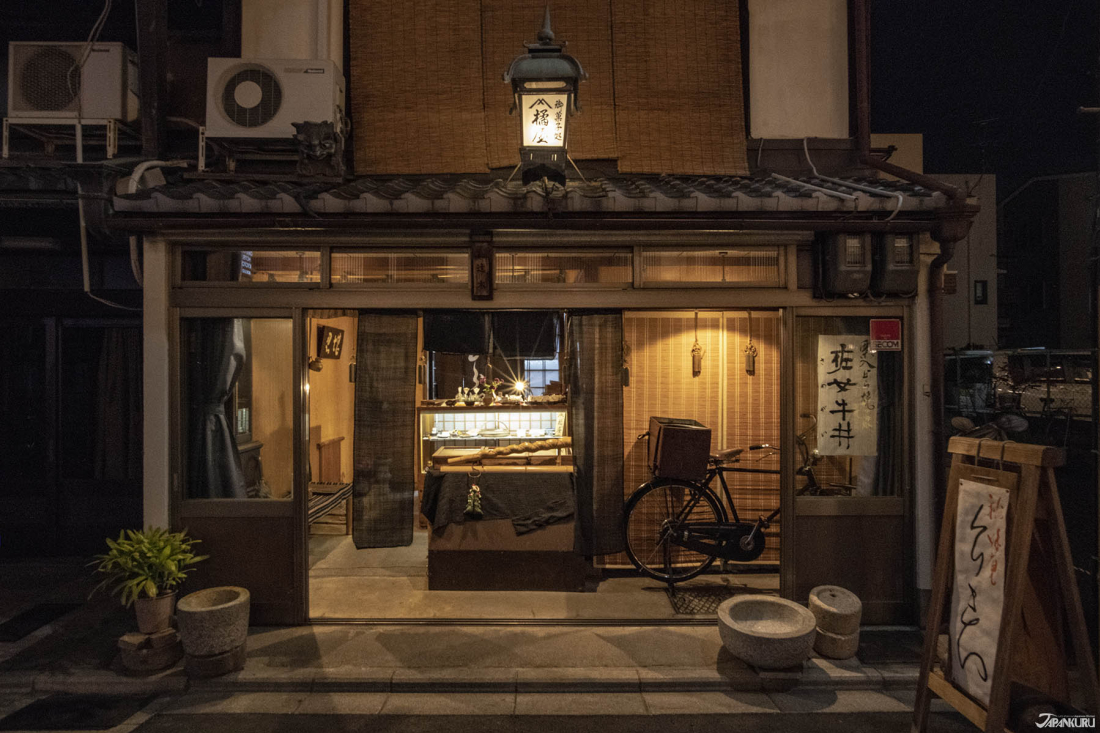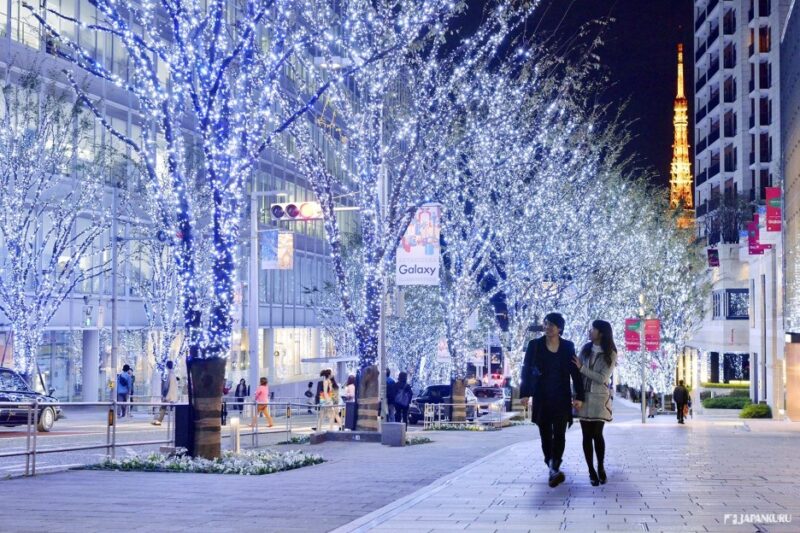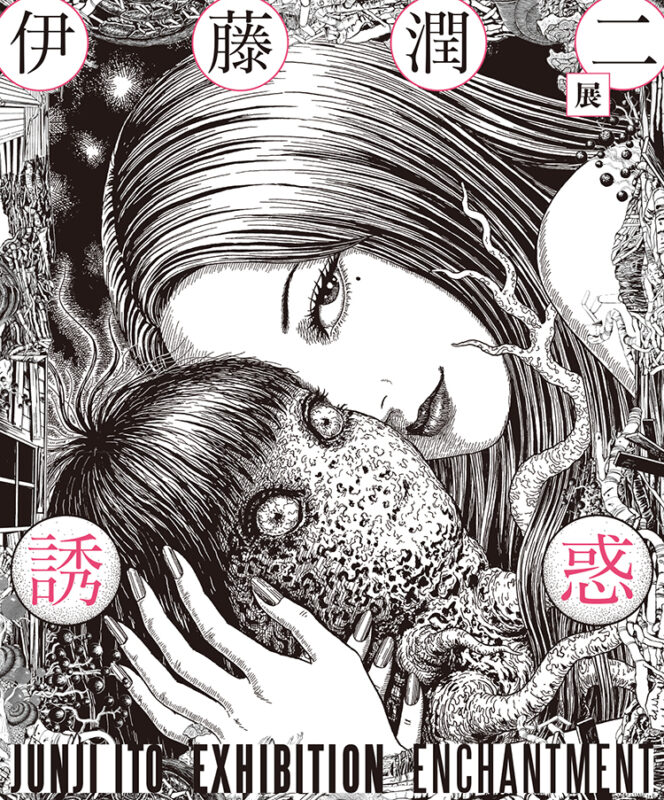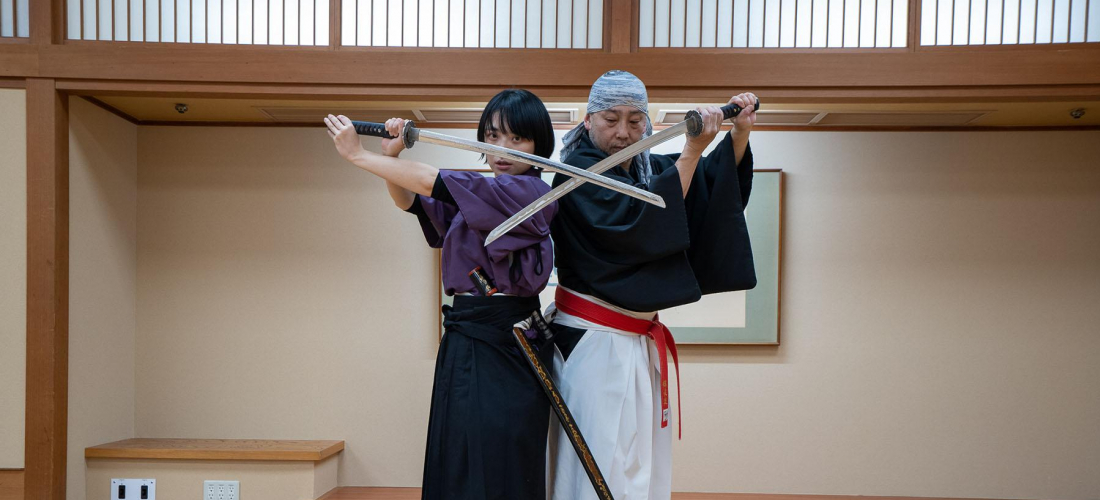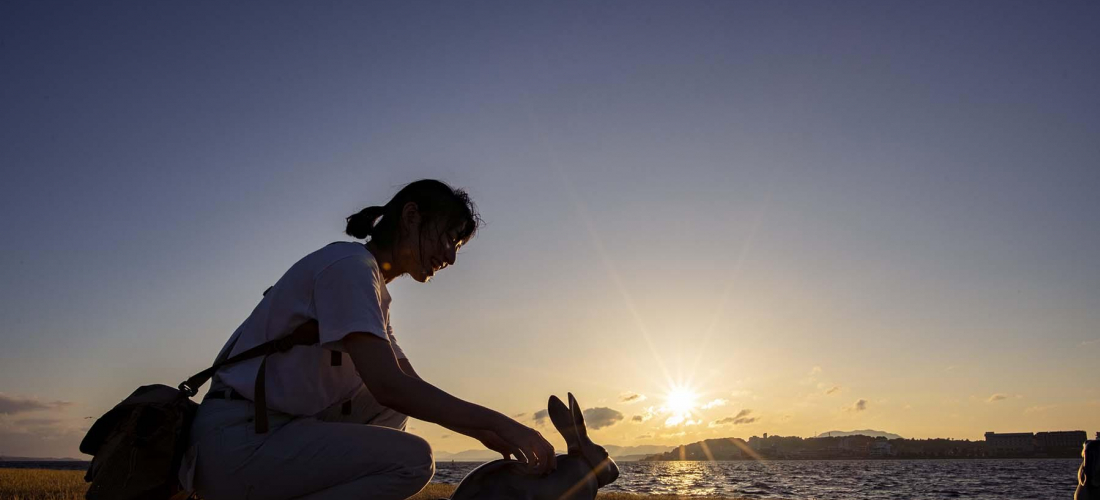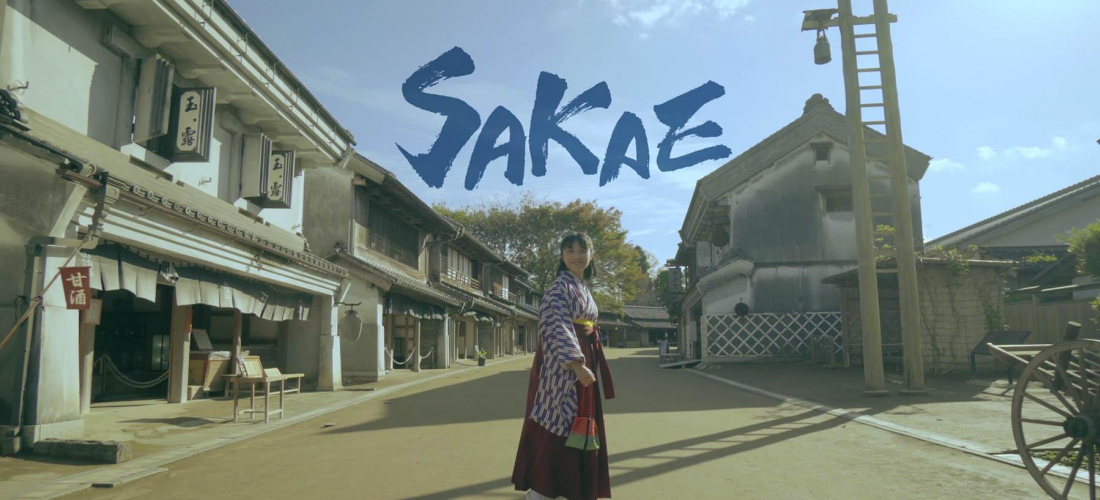
CONTENTS
A city of peaceful Shinto shrines and Zen temples, many visitors to Kyoto are looking for a tranquil retreat during their time in the city, which is why we have to recommend Oriental Hotel Kyoto Rokujo. Between the interiors that reflect the calm ambience of a Japanese tea house garden, the actual natural spaces right in the hotel lobby, and the hotel’s genuine efforts to produce ideal Zen meditation spaces right in the rooms, it’s a great place to spend a relaxing Kyoto excursion.
Oriental Hotel Kyoto Rokujo’s Japanese Omotenashi-Style Hospitality
Japan is proud of its hospitality culture, called “omotenashi” (おもてなし), and the spirit of offering excellent service to guests and visitors. This is clear from the moment you step into the brand new lobby of Oriental Hotel Kyoto Rokujo, which opened in just November 2019.
With smooth, earth-like floors and romantic lanterns lighting the tranquilly lit spaces, you immediately feel the Japanese tea house garden atmosphere the hotel is going for. And not only is the tea ceremony connection clear in the hotel decorations, but during peak check-in hours they also offer new guests their very own mini tea ceremony. Drink a deliciously whisked bowl of matcha in the hotel’s comfortable lounge area, and it’ll feel like a real ceremony, steeped in tradition.
From the many natural spaces to the wooden and stone interiors, every time you enter the hotel, it really does feel a little like you’re heading through the garden towards a little teahouse. It’s a little otherworldly in the very best way – you feel a world away from the stress of the outside world!
And as an anchoring point in the lobby, the front desk and parallel bench across from it are each made out of solid tree trunks, centering you as you check in.
181 Bokumikanabutsucho, Aburanokojidori-rokujo-agaru, Shimogyo-ku, Kyoto
Access: 9 min from Gojo Subway Station, 2 min from Nishinotoin-Rokujo bus stop
Check-In 15:00 | Check-Out 11:00
Official Website (en)
Japanese-Style Rooms or Western-Style, the Choice Is Yours
While all of the rooms in Oriental Hotel Kyoto Rokujo have a bit of Kyoto flair, when it comes to beds sometimes it’s fun to experiment with slightly Japanese-style set-ups, and sometimes you just want a standard mattress and box spring. So both options are available!
The Japanese-style rooms, like this twin room here, have the mattresses straight on the smooth wooden floor, a little like you’d have traditional Japanese futon mattresses. These beds are still much cushier than your average futon, giving guests a soft, fluffy place to rest at the end of a long day of sightseeing, but the arrangement allows you to experience a little taste of Japanese culture, even as you sleep.
The Western-rooms might just look minimalist and clean upon first glance, but the little details show how much thought was put into the design. Continuing the theme of tea gardens, the room’s carpeting is designed after the mossy floors of Japanese landscaping.
The hotel’s suite rooms, like this Corner Suite, utilize the same deceptively simple design to bring the vast space of the city view into the one guest room.
You'll see that all of the rooms have these elegant lamps, guiding you home to your room after a day out and about.
But the Corner Suite's bathroom is especially luxurious, with plenty of sink space for two (or more!) and a separate bathing area, Japanese-style.
Echoing the Kyoto Surroundings Through Offerings in the Breakfast Area/Lounge
Not only does the hotel feel like a true Kyoto experience, it tastes like one too! Every morning, the breakfast at Oriental Hotel Kyoto Rokujo focuses on Japanese cuisine done right, highlighting the gentle flavors of Kyoto with a variety of dishes.
For guests who prefer a simple, familiar breakfast, the hotel's breakfast buffet includes homey basics like scrambled eggs and sausage, but the Kyoto-style offerings are the stars of the show.
Kyoto's nation-wide famous pickled vegetables, locally produced Nanzenji tofu, Kyoto obanzai dishes of all kinds (featuring seasonal produce), the list goes on.
Most impressively, however, they boast huge pots filled with perfectly cooked white rice, and some of the best miso soup you'll ever eat (filled with more delectable local vegetables). Instead of leaving these things out on the counter, they're so picky about keeping the quality of these breakfast basics high, that they have the chefs there to serve it fresh to each guest.
Breakfast
7:00 – 10:00 (L.O. 9:30)
Just for Guests: the Club Lounge
After breakfast is finished, of course, guests are still welcome to use the hotel's comfortable seating spread all around the first floor.
Not only is there lots of space to relax, take a break from sightseeing, and plan the rest of your trip with your companions, but they also provide some refreshments while you're at it. Fruit and yogurt, traditional Japanese-style snacks and sweets, and drinks like coffee, tea, and fruit juices are available throughout the morning and afternoon.
Grab a Drink with Friends, without Leaving the Hotel!
If you're looking for some more indulgent snacks, or a good hard drink, the Kyoto-themed options offered at the hotel's bar counter won't let you down. Although you'll find all sorts of Japanese flavors spread throughout the menu, and even some savory options like delicious tamago-yaki Kyoto-style omelet, we couldn't help but go all out with matcha everything!
Club Lounge
12:00 – 18:00 (hotel guests only)
Try a matcha mojito alongside some matcha swiss roll to relax at the end of a full day.
Or go for some Japanese sake with one of their more flamboyantly spectacular desserts, like this special matcha zenzai.
Experience Kyoto to the Fullest at Oriental Hotel Kyoto Rokujo
While you can certainly purchase as much matcha as you can drink at the hotel's lounge & bar every evening, we recommend you take advantage of the lovely hospitality available, and try rich tea on your first afternoon at the hotel. Each guest can watch the hotel's expert matcha makers whisk up frothy bowls of the green tea, before drinking it with a small bowl of accompanying konpeitou (colorful little Japanese candies).
With the hotel's tea garden theme, you have to experience your own little tea ceremony while you're there! And even better, the matcha is made with local natural spring water, giving you a very literal taste of the neighborhood.
Matcha Service
15:00 – 17:00
While it may seem like a small thing, the little envelope containing "meditation candy" that each guest receives upon check-in is really an impressive project taken on by the facility. You see, in an attempt to encourage relaxation and meditation while visiting Oriental Hotel Kyoto Rokujo, not only does the hotel have its own special candy made specifically to help you concentrate on meditation (and made with the same local spring water), they also have their own app! Download the app while you're there, and you can listen to an original soundscape created just for meditation purposes, using the sounds of the local Rokujo spring water. Find a comfortable spot in your guest room, turn on the tranquil sounds of the app, pop the candy in your mouth, and you're ready for a special Rokujo meditative experience.
Take a Little of Kyoto Home with You
If you've concentrated on seeing the beautiful sights while out and about in Kyoto, and haven't quite found the perfect souvenirs for everyone back home, the hotel has your back. Just browse around the little display area of the lobby, and you'll find some lovely artisan crafts and souvenir items of all kinds. You might just want to buy a few items to bring home for yourself!
The best way to have an enjoyable and memorable trip, wherever you're visiting, is always to experience as much of your surroundings as possible. That's why Oriental Hotel Kyoto Rokujo, with its Kyoto-style tea house garden path aesthetics and meditation experiences, is worth a visit. Don't waste a second of your trip on the mundane!
Oriental Hotel Kyoto Rokujo
181 Bokumikanabutsucho, Aburanokojidori-rokujo-agaru, Shimogyo-ku, Kyoto
Access: 9 min from Gojo Subway Station, 2 min from Nishinotoin-Rokujo bus stop
Check-In 15:00 | Check-Out 11:00
Official Website (en)
While You’re in the Area
Everywhere you look in Kyoto, there are hundreds of years of tradition, and beautiful examples of cultural history – so take advantage of the hotel's proximity, and check out the neighborhood! For bigger sights, Kyoto's Nishi Honganji and Higashi Honganji Temples are within easy walking distance, and their huge traditional buildings will wow traditional Japanese architecture lovers. Take a little walk, and you'll find yourself at the Kyoto Aquarium, and the Kyoto Railway Museum. For more small scale adventures, however, we recommend…
A Local Hot Spring Bath at Hakusanyu
Follow Rokujo Street, an unbelievably quaint little Kyoto alley, and you'll eventually find yourself at the Hakusanyu bathhouse.
Huge baths full of the local natural hot spring water, smaller baths with added medicinal herbs and aromatics, Hakusanyu is both an excellent introduction to the Japanese bathhouse experience, and a great trip for old hands. While Japanese traditions keep bathwater much cleaner than in other parts of the world, the water here is also changed daily, meaning it's sparkling clean.
Grab a drink after your bath! In Japan, milk is the drink of choice.
Hakusanyu Bathhouse Rokujo
893 Ushitoracho, Shimogyo Ward, Kyoto
Weekday Hours: 15:00 – 24:00
Weekend Hours: 7:00 – 24:00
Closed Wednesdays
Official Website (en)
A Taste of Sweet Nostalgia at Tachibanaya Traditional Sweet Shop
Look for the lantern just across the street from the hotel, and you'll find a shop that looks like it's probably been there since time immemorial. This kind of wagashi (和菓子, Japanese sweets) shop really does still exist! Walking up to the counter, it feels like it could be a setting in a retro Japanese drama. They've even got some cool traditional wagashi tools on display.
But this place is still in business! And like most Japanese cuisine, the very best stuff there is always seasonal. Since we dropped in during the fall, the dorayaki stuffed with nutty roasted chestnut was the perfect compliment to the cooling weather. We recommend you pick up a variety of wagashi sweets to bring back and nibble while relaxing in the hotel's lobby seating.
Tachibanaya
185 Bokumikanabutsucho, Aburanokojidori-rokujo-agaru, Shimogyo-ku, Kyoto
Hours: 9:00 – 19:00
Closed Sundays, holidays
There's nothing better than immersing yourself in the local culture during travel, and the calming Zen-style meditation and tea garden atmosphere of Oriental Hotel Kyoto Rokujo makes the experience all the more enjoyable. When you're looking for a little Kyoto retreat – a place for restful evenings after busy days of seeing the city's sights – we think this might be the place for you!
Been to Kyoto recently? Let us know about your experience, or your plans for any upcoming trips to Japan, on twitter, instagram, and facebook!
Details
NAME:Oriental Hotel Kyoto Rokujo
MAP
ACCESS:Gojo Station (五条駅)
CONTACT TEL:81) 75-343-8111
COMMENT
FEATURED MEDIA
VIEW MORE 
A New Tokyo Animal Destination: Relax & Learn About the World’s Animals in Japan
#pr #japankuru #anitouch #anitouchtokyodome #capybara #capybaracafe #animalcafe #tokyotrip #japantrip #카피바라 #애니터치 #아이와가볼만한곳 #도쿄여행 #가족여행 #東京旅遊 #東京親子景點 #日本動物互動體驗 #水豚泡澡 #東京巨蛋城 #เที่ยวญี่ปุ่น2025 #ที่เที่ยวครอบครัว #สวนสัตว์ในร่ม #TokyoDomeCity #anitouchtokyodome

Shohei Ohtani Collab Developed Products & Other Japanese Drugstore Recommendations From Kowa
#pr #japankuru
#kowa #syncronkowa #japanshopping #preworkout #postworkout #tokyoshopping #japantrip #일본쇼핑 #일본이온음료 #오타니 #오타니쇼헤이 #코와 #興和 #日本必買 #日本旅遊 #運動補充能量 #運動飲品 #ช้อปปิ้งญี่ปุ่น #เครื่องดื่มออกกำลังกาย #นักกีฬา #ผลิตภัณฑ์ญี่ปุ่น #อาหารเสริมญี่ปุ่น

도쿄 근교 당일치기 여행 추천! 작은 에도라 불리는 ‘가와고에’
세이부 ‘가와고에 패스(디지털)’ 하나면 편리하게 이동 + 가성비까지 완벽하게! 필름카메라 감성 가득한 레트로 거리 길거리 먹방부터 귀여움 끝판왕 핫플&포토 스폿까지 총집합!
Looking for day trips from Tokyo? Try Kawagoe, AKA Little Edo!
Use the SEIBU KAWAGOE PASS (Digital) for easy, affordable transportation!
Check out the historic streets of Kawagoe for some great street food and plenty of picturesque retro photo ops.
#pr #japankuru #도쿄근교여행 #가와고에 #가와고에패스 #세이부패스 #기모노체험 #가와고에여행 #도쿄여행코스 #도쿄근교당일치기 #세이부가와고에패스
#tokyotrip #kawagoe #tokyodaytrip #seibukawagoepass #kimono #japantrip

Hirakata Park, Osaka: Enjoy the Classic Japanese Theme Park Experience!
#pr #japankuru #hirakatapark #amusementpark #japantrip #osakatrip #familytrip #rollercoaster #retrôvibes #枚方公園 #大阪旅遊 #關西私房景點 #日本親子旅行 #日本遊樂園 #木造雲霄飛車 #히라카타파크 #สวนสนุกฮิราคาตะพาร์ค

🍵Love Matcha? Upgrade Your Matcha Experience With Tsujiri!
・160년 전통 일본 말차 브랜드 츠지리에서 말차 덕후들이 픽한 인기템만 골라봤어요
・抹茶控的天堂!甜點、餅乾、飲品一次滿足,連伴手禮都幫你列好清單了
・ส่องมัทฉะสุดฮิต พร้อมพาเที่ยวร้านดังในอุจิ เกียวโต
#pr #japankuru #matcha #matchalover #uji #kyoto #japantrip #ujimatcha #matchalatte #matchasweets #tsujiri #말차 #말차덕후 #츠지리 #교토여행 #말차라떼 #辻利抹茶 #抹茶控 #日本抹茶 #宇治 #宇治抹茶 #日本伴手禮 #抹茶拿鐵 #抹茶甜點 #มัทฉะ #ของฝากญี่ปุ่น #ชาเขียวญี่ปุ่น #ซึจิริ #เกียวโต

・What Is Nenaito? And How Does This Sleep Care Supplement Work?
・你的睡眠保健品——認識「睡眠茶氨酸錠」
・수면 케어 서플리먼트 ‘네나이토’란?
・ผลิตภัณฑ์เสริมอาหารดูแลการนอน “Nenaito(ネナイト)” คืออะไร?
#pr #japankuru #sleepcare #japanshopping #nenaito #sleepsupplement #asahi #睡眠茶氨酸錠 #睡眠保健 #朝日 #l茶胺酸 #日本藥妝 #日本必買 #일본쇼핑 #수면 #건강하자 #네나이토 #일본영양제 #อาหารเสริมญี่ปุ่น #ช้อปปิ้งญี่ปุ่น #ร้านขายยาญี่ปุ่น #ดูแลตัวเองก่อนนอน #อาซาฮิ

Japanese Drugstore Must-Buys! Essential Items from Hisamitsu® Pharmaceutical
#PR #japankuru #hisamitsu #salonpas #feitas #hisamitsupharmaceutical #japanshopping #tokyoshopping #traveltips #japanhaul #japantrip #japantravel

Whether you grew up with Dragon Ball or you just fell in love with Dragon Ball DAIMA, you'll like the newest JINS collab. Shop this limited-edition Dragon Ball accessory collection to find some of the best Dragon Ball merchandise in Japan!
>> Find out more at Japankuru.com! (link in bio)
#japankuru #dragonball #dragonballdaima #animecollab #japanshopping #jins #japaneseglasses #japantravel #animemerch #pr

This month, Japankuru teamed up with @official_korekoko to invite three influencers (originally from Thailand, China, and Taiwan) on a trip to Yokohama. Check out the article (in Chinese) on Japankuru.com for all of their travel tips and photography hints - and look forward to more cool collaborations coming soon!
【橫濱夜散策 x 教你怎麼拍出網美照 📸✨】
每次來日本玩,是不是都會先找旅日網紅的推薦清單?
這次,我們邀請擁有日本豐富旅遊經驗的🇹🇭泰國、🇨🇳中國、🇹🇼台灣網紅,帶你走進夜晚的橫濱!從玩樂路線到拍照技巧,教你怎麼拍出最美的夜景照。那些熟悉的景點,換個視角說不定會有新發現~快跟他們一起出發吧!
#japankuru #橫濱紅磚倉庫 #汽車道 #中華街 #yokohama #japankuru #橫濱紅磚倉庫 #汽車道 #中華街 #yokohama #yokohamaredbrickwarehouse #yokohamachinatown

If you’re a fan of Vivienne Westwood's Japanese designs, and you’re looking forward to shopping in Harajuku this summer, we’ve got important news for you. Vivienne Westwood RED LABEL Laforet Harajuku is now closed for renovations - but the grand reopening is scheduled for July!
>> Find out more at Japankuru.com! (link in bio)
#japankuru #viviennewestwood #harajuku #omotesando #viviennewestwoodredlabel #viviennewestwoodjapan #비비안웨스트우드 #오모테산도 #하라주쿠 #日本購物 #薇薇安魏斯伍德 #日本時尚 #原宿 #表參道 #japantrip #japanshopping #pr

Ready to see TeamLab in Kyoto!? At TeamLab Biovortex Kyoto, the collective is taking their acclaimed immersive art and bringing it to Japan's ancient capital. We can't wait to see it for ourselves this autumn!
>> Find out more at Japankuru.com! (link in bio)
#japankuru #teamlab #teamlabbiovortex #kyoto #kyototrip #japantravel #artnews
Photos courtesy of teamLab, Exhibition view of teamLab Biovortex Kyoto, 2025, Kyoto ® teamLab, courtesy Pace Gallery

Japanese Makeup Shopping • A Trip to Kamakura & Enoshima With Canmake’s Cool-Toned Summer Makeup
#pr #canmake #enoshima #enoden #에노시마 #캔메이크 #japanesemakeup #japanesecosmetics

⚔️The Robot Restaurant is gone, but the Samurai Restaurant is here to take its place. Check it out, and don't forget your coupon!
🍣신주쿠의 명소 로봇 레스토랑이 사무라이 레스토랑으로 부활! 절찬 쿠폰 발급중
💃18歲以上才能入場的歌舞秀,和你想的不一樣!拿好優惠券去看看~
#tokyo #shinjuku #samurairestaurant #robotrestaurant #tokyotrip #도쿄여행 #신주쿠 #사무라이레스토랑 #이색체험 #할인이벤트 #歌舞伎町 #東京景點 #武士餐廳 #日本表演 #日本文化體驗 #japankuru #japantrip #japantravel #japanlovers #japan_of_insta

Japanese appliance & electronics shopping with our KOJIMA x BicCamera coupon!
用JAPANKURU的KOJIMA x BicCamera優惠券買這些正好❤️
코지마 x 빅 카메라 쿠폰으로 일본 가전 제품 쇼핑하기
#pr #japankuru #japanshopping #kojima #biccamera #japaneseskincare #yaman #dji #osmopocket3 #skincaredevice #日本購物 #美容儀 #相機 #雅萌 #日本家電 #일본여행 #면세 #여행꿀팁 #일본쇼핑리스트 #쿠폰 #일본쇼핑 #일본브랜드 #할인 #코지마 #빅카메라 #japankurucoupon

